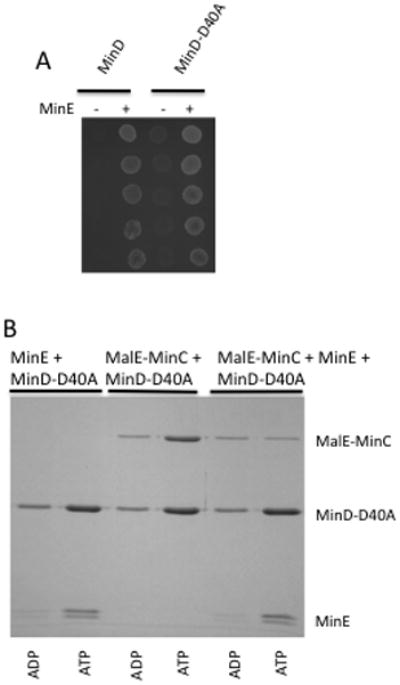Fig. 4.

Characterization of MinD-D40A. (A) The ability of MinD-D40A to activate MinC and respond to MinE was determined. JS964 (Δmin) containing pSEB104CD expressing WT MinD or MinD-D40A was transformed with a plasmid carrying minE, or the corresponding vector. A colony from each transformation was picked into 500 μl of LB, serially diluted tenfold and 5 μl of each dilution was spotted on plates containing 0.1% arabinose (to induce MinCD) and 5 μM IPTG (to induce MinE). (B) MinD-D40A binds MinC and MinE in vitro. MinD-D40A was incubated with vesicles in the presence of ATP or ADP. MinE, MalE-MinC or both were added and vesicles recovered by centrifugation. Bound proteins were determined by analyzing the pellets on SDS-PAGE. Although MinD-D40A recruits MinC to vesicles, it is less effective than WT MinD or MinD-M193L. The two bands of MinE are due to proteolysis during purification and storage leading to loss of some N-terminal residues.
